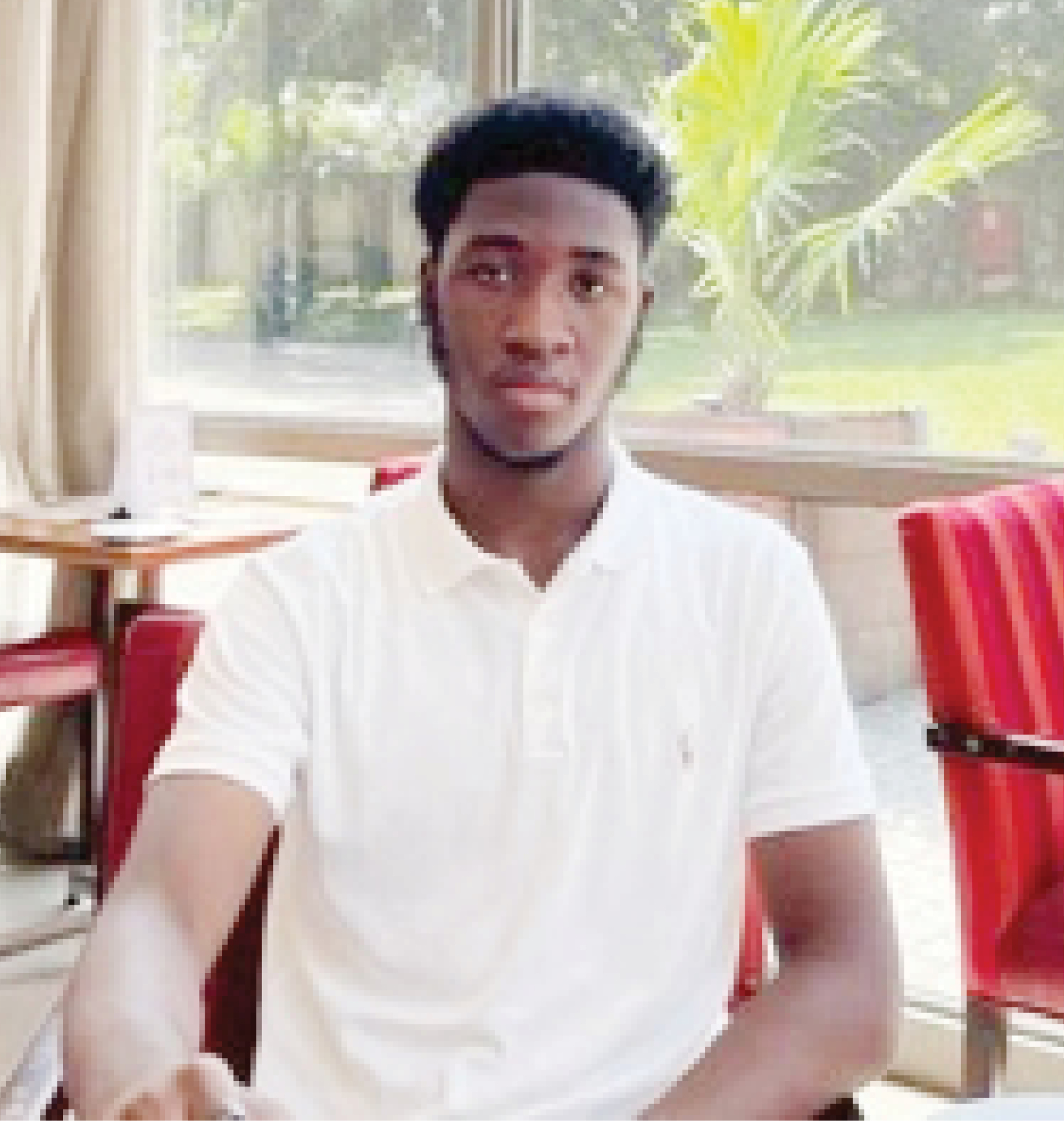How I fell in love with Afrofuturism – 18-year-old digital artist
Nana Kwadwo, popularly called NK, is an 18-year-old visual artist that creates art from his surroundings and empowers his generation. The self-proclaimed Afrocentric visual artist’s love for drawing and sketching at a young age pushed him to explore the many ways in which modern technology supports and advances creativity. Simply playing around with a popular […]

Nana Kwadwo
Nana Kwadwo, popularly called NK, is an 18-year-old visual artist that creates art from his surroundings and empowers his generation. The self-proclaimed Afrocentric visual artist’s love for drawing and sketching at a young age pushed him to explore the many ways in which modern technology supports and advances creativity.
Simply playing around with a popular photo editing app propelled the young artist into a world of self-discovery, empowerment and a keen understanding of how big the universe we call home actually is. Armed with a keen interest in all things Afrofuturist, the Ghanaian’s futuristic eye has gained the teen artist’s recognition from some of his industry faves, too. He speaks about creating art from his surroundings and empowering his generation.
Leïla Slimani to chair International Booker Prize, 2023
AFRIMA to promote Africa strength in music – Organisers
Describe your background as an artist and the journey you have taken to get to where it is today.
I grew up with an interest in art and drawing. I loved to draw and sketch, usually with both pen and pencils, whatever was interesting around me. I would make compositions of items within my surroundings and paste them on the walls of my parent’s rooms.
My interest in the digital world peaked around the ages of 14 and 15. I have always been intrigued by astronauts and futuristic technology. I started digital art in 2017 when I created 2D pieces on the PicsArt app on a phone at home. Eventually, I gained access to the Adobe Photoshop software.
Artists like David Alabo, Beeple, Basquiat and Juan Carlos Ribas inspired me and also made me think of what I could achieve if I tried. I spent a lot of time watching tutorial videos and related content online to be able to develop my skill.
Initially, I created my pieces by combining a number of stock images and online resources to create an entirely new fictional scene. Around early 2020 I had a creative block and was desperate to find new sources of inspiration. Over time, I came to the realisation that my inspiration surrounded me and that I shouldn’t have to force creativity. I did more research on Afrocentric art and stepped out of my comfort zone to create my first Afrocentric pieces, “Gateway to Paradise” and “Modernisation,” These pieces attracted a lot of attention; also the smArt magazine, which granted me my first interview and magazine feature, opening the door to new relationships in the creative industry, various opportunities, and collaborations.

What are the central themes in your work?
My work is mainly centred around the expression of development in the Black experience and empowering African culture. I try to factor in Afrofuturism and Afrocentrism in making my pieces, whether it is how my models are dressed, their accessories or represented by items that surround them. My pieces are intended to put forward the message of creating brighter futures and realities where Africans thrive. This helps give my pieces in themselves an identity.
How did you decide on using a digital medium for your art?
Although I draw and sketch, I also feel very comfortable using digital software, which to me, offers endless possibilities. I believe that using digital media as an African artist helps bridge the gap between technology and cultural art, directly falling in line with my field of interest, Afrofuturism.
How has the pandemic affected you creatively?
The start of the pandemic in 2020 was devastating. A lot happened during that period. It was during the lockdown that I made the decision to transition into creating Afrocentric art. We were made to take a break from school, which freed up a lot of my time. I had the time to research, watch tutorials and practise more. It might have been one of the most defining years for me as an artist. It also granted me a larger audience as everyone was made to work from home. I actually learned a lot and worked hard during that period, and this led to my work improving massively.
Can you describe your artistic relationship with ‘Afro-futurism’?
Afrofuturism is a theme I can really relate to as a young African. It is our responsibility to contribute to our development as a people. I think my interest in space and what could exist outside the world we live in also had an impact on my desire to incorporate futuristic technology with cultural art. I like to think of what we can achieve, the seemingly impossible things, and then I pour out those thoughts and ideas into my art, and that is why I immediately fell in love with Afrofuturism. We are the future, the stars of our own show.
Can you talk about your use of colours and accessories in your art?
The most dominant figure in my pieces is usually the black figure/model, which usually stands out as the main subject. Regarding the backgrounds, I usually try to make a scene with colours to create a particular mood or in some of my pieces to complement the clothes of the model, usually African prints. They range from solid backgrounds to gradients and various sky textures. I use different cultural accessories, both for beautification and also to provide that Afrocentric feel and message. I love to use various beads, bracelets and traditional cloths with interesting textures to convey these messages of who we are as Africans and where we come from.
Culled from okayafrica.com
